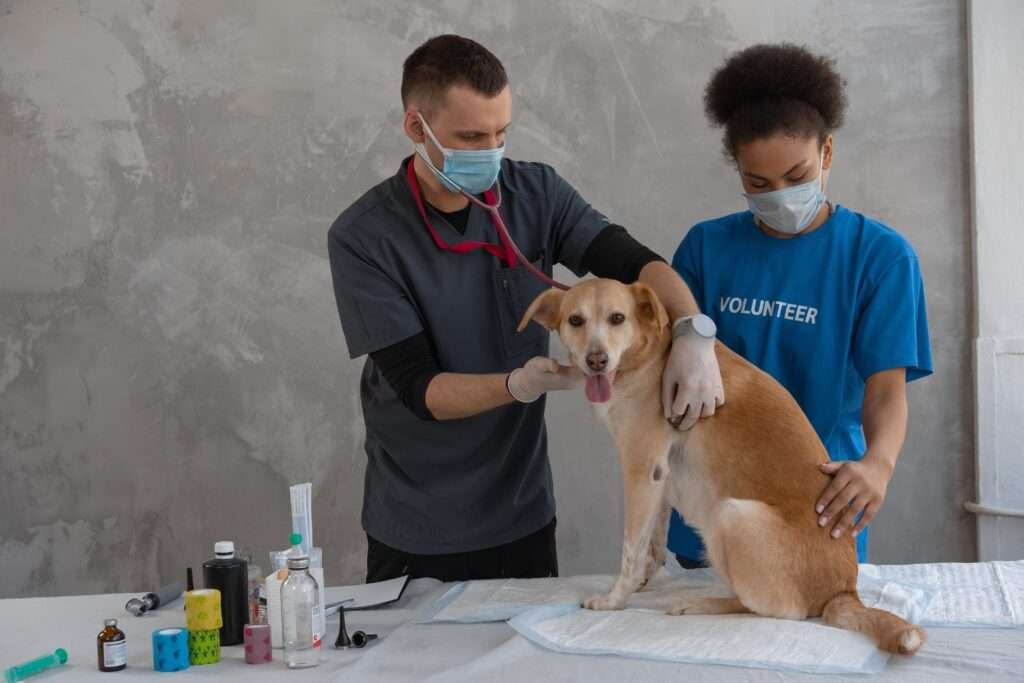If you have a pet in your house, you might agree that they are our beloved ones. They serve as family members and gain our love and attention. But what happens when our beloved pets fall sick or get injured?
According to a survey report, 1.2 million dogs are killed on the roads due to car accidents. The concept of pet insurance is presented as a solution to this issue.
In the event of an accident, or injury to our pets, pet insurance serves as a buffer. It protects us from the unexpected medical bills that come with our little friend’s health. As with the health insurance that we have for ourselves, there is also pet insurance, which serves as a safety net for our pets.

To know better how it works, let’s look deep into it.
What is pet insurance?
Pet insurance is a type of financial protection that pet owners buy to cover veterinary bills. It is similar to human health insurance in that it requires monthly or yearly contributions for repayment of eligible veterinary costs.
When a pet’s covered condition requires medical care, the owner pays the vet in advance. Then the owner sends a claim to the insurance company in order to get their money back.
The monthly fee for this kind of insurance is normally based on the average cost of veterinarian treatment in the area, and there is typically a deposit to pay.
Although most plans target dogs and cats, some providers include coverage for a wide range of pets, from birds to horses. The goal is to reduce the cost of unexpected veterinary bills.
How does it work?
Pet insurance protects your pets from any uncertain circumstances. The policies for it keep changing, but if you want to claim your pet insurance, then here are some simple steps that you should follow:
Choose a pet insurance policy:
Pick a policy that works for you by choosing your deductible, reimbursement percentage, and annual limit.
Visit any licensed vet or animal hospital:
Whenever necessary, care for your pet and pay the full bill at the point of service.
Submit a claim:
Submit the claim by mail, app, or online, together with all relevant documents and the medical history.
Await claim approval:
The claim is reviewed and approved by the insurance company, which could include the documentation verification.
Receive reimbursement:
Get reimbursed for 70% to 100% of the approved expenses once the deductibles have been satisfied. It usually takes five to nine days to obtain reimbursement.
Direct reimbursement to policyholder:
In the majority of pet insurance plans, the policyholder is reimbursed and has the freedom to visit any licensed vet clinic or animal hospital in the U.S.
What does it cover?
Pet insurance policies are not universal and must be customized depending on factors such as the pet’s species, breed, age, and the location of the owner. Providers provide a wide range of coverage options to pet owners, who are able to select the plan that fits their specific needs and budget.
It is very necessary to review and compare the various plans to determine the one that is most suitable for your pet’s needs and your budget.
On the other hand, pet insurance usually includes such features in the policy for the well-being of the animal.
- Emergency and specialty care for unforeseen emergencies and consultations with the specialists.
- Diagnostic procedures such as blood tests, CT scans, and X-rays are covered.
- Prescription medications, like reimbursement, reduce the cost of the treatment.
- Pet behavior consultations and treatment coverages are available.
- Routine care, known as a wellness plan, includes preventive expenses such as dental cleaning, vaccinations, yearly physical exam fees, and spaying or neutering.
Pet insurance also considers genetic and inherited problems, like allergies and hip dysplasia. Breed-specific health concerns are acknowledged, and corresponding medical expenses are covered. Ensure that these problems do not exist before obtaining insurance or during waiting periods.
What doesn’t cover by it?
In the area of pet insurance, there are some major issues that are not included in a normal policy. Notably, there is an issue with preexisting conditions; any condition that existed before the insurance became effective may not be fully covered.
In the same way, non-veterinary services and regular pet care costs are typically excluded from coverage unless one selects a specific routine or wellness plan.
- Pre-existing conditions
- breeding
- DNA testing
- Preventative procedures
- Experimental procedures
- Elective Procedures
But the cost of pet insurance does not cover most of the daily costs related to owning a pet, such as kennel fees, grooming, food, toys, vitamins, etc. However, there are some constraints that offer a degree of flexibility. Wellness plans offered by providers like Embrace may involve prescription food coverage. Others, such as Fetch, may include the coverage of boarding fees in case of a long hospital stay, usually lasting four or more days.
How much does pet insurance cost?
As per the Best Pet Insurance Companies of 2024 rating, Lemonade is priced most affordably. It provides insurance for dogs at a sample monthly rate of $19.44 or cats with an amount of $11.00 each month. Conversely, Nationwide appears to be a more expensive option for the dogs at $56.74 per month, while Trupanion is as such for the cats at $30.88 per month.
As per the industry studies, an average of $53 is spent monthly on comprehensive insurance for your canine friend, and $32 is spent monthly on feline insurance. Pet insurance costs are a complex topic, but these figures provide a far more comprehensive picture that makes it easier to understand.
There are several factors on which the pet insurance cost depends:
- Age of your pet
- The pet insurance deductible
- Your pet’s size
- The type of coverage plan you select
- The reimbursement percentage
- Your pet’s breed
- The company you choose
- Terms and length of the insurance policy
Benefits of Pet Insurance:
The benefits of pet insurance are numerous, and it functions as a protective device for the owners, providing financial stability and comfort. If you have low income, it support you in this matter by taking care of your pet. The most significant advantages are here:
- Pet insurance gives you a lot of financial stability by covering routine checks and also emergency medical treatment.
- Coverage encompasses a wide range of medical services, including diagnostic tests and prescription drugs. As well as specialized treatments such as behavioral therapy.
- In terms of its most notable benefits, there is a lot of flexibility that allows you to adjust the plans based on your budget.
- The versatility of pet insurance allows you to easily modify the coverage according to what your pets really need.
- In essence, pet insurance provides a safety net to ensure that you have the required assurance and financial support.
Moreover, the versatility that is provided by pet insurance programs offers many different needs and choices. Deductibles and reimbursement rates can be tailored in line with your economic standing to allow you to pick the options that suit your purse.
Conclusion:
Pet insurance is like a safety shield for your pets, protecting them from costly vet bills. It includes accidents, sickness, and even preventative care so that your pet gets medical attention without breaking the bank. Your ability to have your pets receive professional care is a very big factor that brings comfort. That’s why pet insurance remains one of the pillars responsible for the lifetime well-being and happiness of the best friends.




